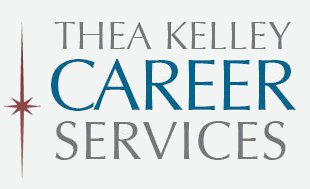 By now, you know that interview storytelling is a crucial job search skill, and you probably know helpful frameworks like STAR, SOAR and CAR. That’s a good start.
By now, you know that interview storytelling is a crucial job search skill, and you probably know helpful frameworks like STAR, SOAR and CAR. That’s a good start.
Now, do you have enough stories? And will you be able to think of the right one when you need it?
This post tells you how to prepare an abundant list of relevant stories so that no matter what behavioral interview questions come at you, you’re never stumped.
How many interview stories do you need?
Some people will tell you to develop five or six interview stories. I think you need more, for three reasons.
First, many interview processes involve multiple interviews: with the recruiter, the hiring manager, the teammates, the hiring manager’s boss. If you tell the same five or six stories at each of those interviews, when these people meet to discuss the candidates they’ll get the impression that you haven’t got much to say for yourself.
Second, you may well find yourself being asked a question that none of your five or six stories can address.
Third, the process of searching your memory for stories can build your awareness of your strengths.
For these reasons, I’m not alone in recommending that most job seekers try to build up a list of at least a dozen stories, preferably more. If you just gasped, relax. You have more stories than you think, and I’ll tell you how to bring them to mind and get that list together.
How to think of more interview stories–three methods:
Method One: Low-hanging Fruit
First, look at what’s been written about you. What stories are on your resume, or implied by it? What accomplishments are mentioned, or implied, in any performance reviews you’ve received? Do you have any positive kudos, LinkedIn recommendations or letters of recommendation?
Whenever one of these documents brings a story to mind, give that story a title and put it on your stories list. Make sure each title is specific enough that it couldn’t apply to any other story. So instead of “Difficult Project,” you might write “Difficult Project with Salesforce, 2019,” and instead of “Resolving Conflict” you’d write “Resolving Timeframes Conflict with Jeff.”
You won’t be using these titles when you tell your stories in interviews. They’re just for your reference, so you can quickly find a story on your list. Good titles also make the list easier to review and remember.
Method Two: Behavioral Interview Questions
Next, do an online search for “behavioral interview questions,” copy the questions you find, and past them all into one big word processing file. After you’ve got about 100 questions (don’t worry about duplications), do another search adding your desired job title, e.g., “behavioral interview questions project manager” or whatever. Copy and paste those, and save it. Then starting reading the questions, and every time one of them brings a story to mind, title the story, note that title under the question, and also add it to a separate list entitled “Interview Stories.”
Don’t linger for more than, say, 30 seconds on any question you can’t answer. Move on to the next question. If you have 100 questions on your list and you think of a story for one out of 20, that’s 5 stories and you’re doing fine.
“But,” you may be thinking, “what about all those questions I didn’t have a story for?” Don’t worry about them, because (a) you may never be asked those questions, and (b) as you use Method Three (and the two additional methods in my next post), you’ll find new stories that may well cover some of those questions. Most stories turn out to be multi-purpose, as I’ll discuss in that post.
Now, move on to the next method.
Method Three: Job Postings
Gather up several job postings that are typical of the type of job you’ll be interviewing for. For every major task or qualification described, ask yourself, “What story could I tell about successfully doing that task/demonstrating that qualification?” Again, don’t worry if you don’t think of a story for everything, and make sure you add any new stories to your list.
The great thing about this method is that these stories will be very relevant to your target jobs.
Bonus Method: Stories-within-Stories
Here’s yet another good way to make sure you have plenty of interview stories: the “stories-within-stories” method.
The Benefits of Doing This Work:
This all sounds like a lot of work, doesn’t it? The good news is, to the extent that you focus on your success stories, you’ll be increasing your confidence as well as your interview storytelling.
Want more help? In my post, “How to Tell the Right Interview Story for Any Question,” I’ll give you two more methods for building your stories list, plus tips on how to “tags” to your list to help you remember the right story for any question.

